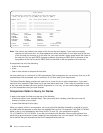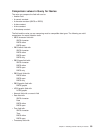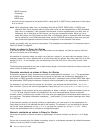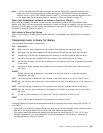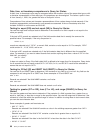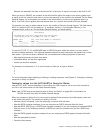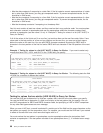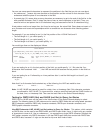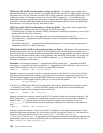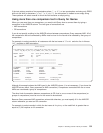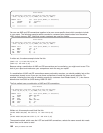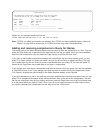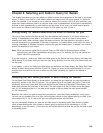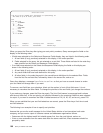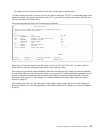DBCS-only LIKE, NLIKE (not like) pattern in Query for iSeries: This pattern, which contains only
double-byte characters, can be used for any bracketed-DBCS field, but not for a DBCS-graphic field. Start
the pattern with a shift-out character and end it with a shift-in character. Use the DBCS percent sign (%%)
to skip any number of characters or none at all. Use the DBCS underscore (__) to indicate that any
double-byte character is accepted for that position. Although the LIKE pattern contains only double-byte
characters, it can test DBCS-open fields that contain both double-byte character data and alphanumeric
data because a %% sign can skip over both kinds of data.
DBCS-open LIKE, NLIKE (not like) pattern in Query for iSeries: This pattern, which contains both
DBCS and SBCS character data, can be used only for DBCS-open fields.
v The percent sign (%) skips any number of SBCS characters or double-byte characters, or none at all. It
ignores shift-out and shift-in characters.
v The DBCS percent sign (%%) works the same way as the standard percent sign (%).
v The underscore (_) represents one SBCS character. It does not represent a double-byte, shift-out, or
shift-in character.
v The DBCS underscore (__) represents one double-byte character. It cannot be used to represent an
alphanumeric, shift-out, or shift-in character.
DBCS-Graphic LIKE, NLIKE (not like) pattern in Query for iSeries: This pattern, which contains only
double-byte characters, can be used only for a DBCS-graphic field. A DBCS-graphic test pattern must
have an uppercase or lowercase G before the apostrophe. Within the apostrophes, the pattern must start
with a shift-out character and end with a shift-in character. Use the DBCS percent sign (%%) to skip any
number of characters or none at all. Use the DBCS underscore (__) to indicate that any double-byte
character is accepted for that position.
Examples: In the following examples, %% represents the DBCS percent sign, __ represents the DBCS
underscore, s/o represents the shift-out character, s/i represents the shift-in character, and a pair of the
same SBCS characters, such as DD, represent a single DBCS character.
Example 1: DBCSFLD1 LIKE ’s/o__DD__%%HH%%s/i’
Example 1 selects only records in which the second character in field DBCSFLD1 is DD, the first and third
characters are any double-byte characters, and at least one of the fourth through last characters is HH.
This test could be used for any bracketed-DBCS field that is at least ten characters long. This test could
also be used for a DBCS-graphic field by puttingaGinfront of the test pattern:
G’s/o__DD__%%HH%%s/i’
If DBCSFLD1 is a DBCS-open field, this test could select data that has alphanumeric characters, such as
‘s/oXXDDMMs/iAnns/oGGHHs/i’, for which the DBCS percent sign would skip over both double-byte
characters and alphanumeric characters before reaching HH.
Example 2: DBCSFLD2 LIKE ’s/o%%__%%s/i’
Example 2 selects only records in which field DBCSFLD2 contains at least one double-byte character. The
DBCS underscore (__) can stand for a double-byte character, but not for an alphanumeric character. A
different value, ‘%_%’, selects records that have at least one alphanumeric character. A value of
‘s/o__________s/i’ selects those that have all double-byte characters for a field that is ten characters
long.
Example 3: DBCSFLD3 LIKE ’s/oYY%%s/i A_o’
Example 3 selects all records in which the field DBCSFLD3 begins with the double-byte character YY and
ends with alphanumeric characters, the first of which is blank, the second of which is A, and the fourth of
which is o. This test selects fields such as ‘s/oYYs/i Amo’; ‘s/oYYZZXXs/iMary Abo’;or
‘s/oYYs/iABCs/oTTWWs/iM Aro’. It is not important that the percent between the double-byte character and
alphanumeric parts of the value is a DBCS percent; the following two values are equivalent to the one
used: ‘s/oYY%s/i A_o’ and ‘s/oYY%%s/i% A_o’.
100 Query for iSeries Use V5R2



